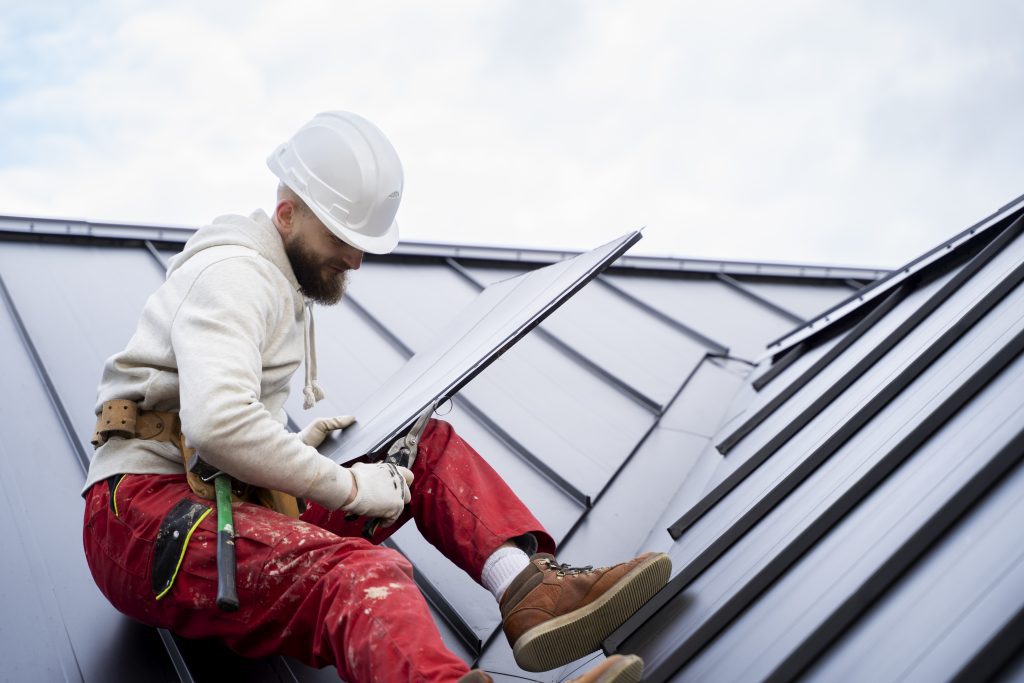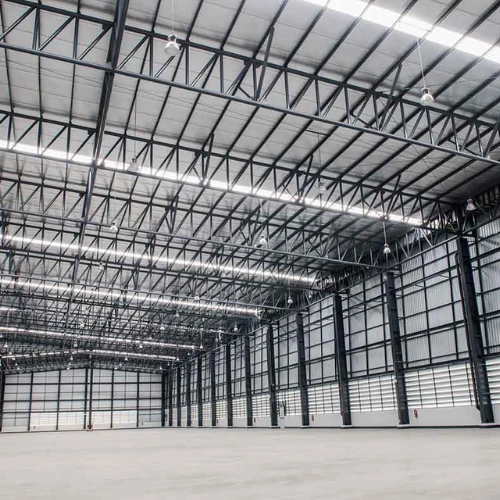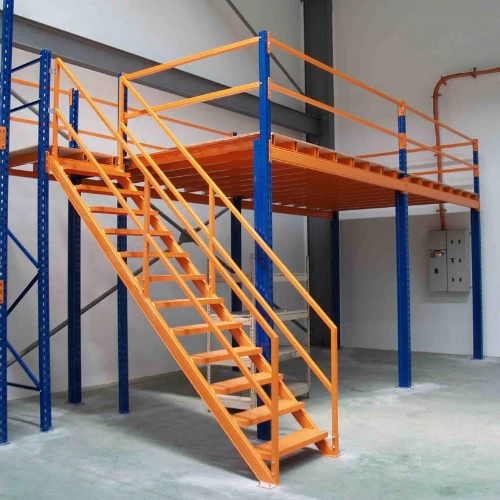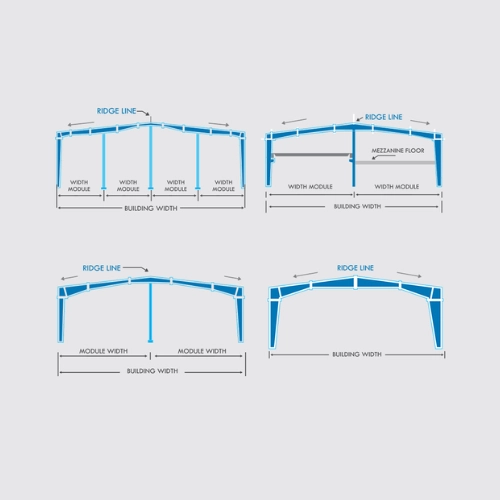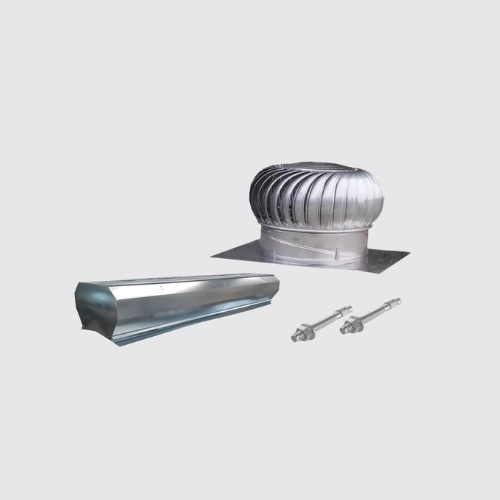In a climate like Gujarat, heat is more than just a comfort issue; it’s an economic and structural one. Soaring temperatures don’t just mean high AC bills; they mean stressed buildings and unproductive environments. The common mistake is to tackle this with a piecemeal approach: insulating just the roof and wondering why it’s still hot. The real solution isn’t just more AC; it’s a smarter, more fundamental fix: a comprehensive Heat Insulation for Roof Ceiling and Wall system.
Heat is like water; it will find any weak point to get in. A truly energy-efficient building requires a holistic thermal envelope. This guide will walk you through the essentials of creating that envelope, especially for modern Pre-Engineered Buildings (PEBs).
Why a 360-Degree Approach to Insulation Matters
When we talk about “Heat Insulation for Roof Ceiling and Wall,” we’re not just talking about materials. We’re talking about a system. This system is the single most important investment you can make in a building for long-term sustainability and comfort.
Here’s why it’s so critical:
- Massive Energy Savings: A well-insulated building can cut down cooling costs by 30-50%. This means the HVAC system isn’t in a constant battle with incoming heat, leading to significantly lower power bills and a faster ROI on the construction investment.
- Consistent Occupant Comfort: Effective Heat Insulation for Roof Ceiling and Wall maintains a stable, comfortable indoor environment. This eliminates hot spots and makes the space comfortable, which is essential for both customers and a productive workforce.
- Increased Productivity: In a commercial or industrial setting, comfort is directly linked to productivity. A cooler, more stable environment means a more focused and efficient workforce.
- Enhanced Structural Durability: Extreme heat and temperature fluctuations cause building materials to expand and contract. This thermal stress can lead to cracks, leaks, and long-term damage. A good system of Heat Insulation for Roof Ceiling and Wall protects the structural integrity of your building.
Deconstructing Your Building’s Defences: The “Big Three”
Heat doesn’t just enter through the roof. It radiates through every exposed surface. Therefore, a complete Heat Insulation for Roof Ceiling and Wall strategy must address all three key areas.
1. Roof Insulation: The First Line of Defence
The roof bears the brunt of the sun’s attack, absorbing up to 70% of the total heat a building gains. This makes roof insulation the most critical part of your strategy.
In modern construction, this often involves two main types:
- Reflective Insulation: These are often thin, multi-layered Insulation Sheets (like foil-faced bubble insulation) that reflect radiant heat before it can be absorbed. They are highly effective in PEB structures.
- Resistive Insulation (Bulk): These are thick materials, like sandwich panels, that slow down the conduction of heat.
An effective Heat Insulation for Roof Ceiling and Wall plan must start at the top. Neglecting the roof means your building will fail its primary thermal defence test.
2. Ceiling Insulation: The Comfort Barrier
If the roof is the first line of defence, the ceiling is your second. In buildings with an attic or a gap above the false ceiling (a plenum space), the air between the roof and the ceiling can become superheated. This trapped hot air then radiates heat downwards into the occupied space.
Ceiling insulation stops this “top-down” heat transfer, working in tandem with the roof system. This is a vital part of a complete Heat Insulation for Roof Ceiling and Wall solution, ensuring that any heat that does get past the roof is stopped before it reaches the people inside.
3. Wall Insulation: The Overlooked Heat Shield
A common mistake is to focus all efforts on the roof and ceiling, only to have the building’s walls (especially those facing East and West) which actively absorb heat all day and radiate it inwards, often long after the sun has set.
Wall insulation is the final piece of the thermal puzzle. In concrete structures, this can be challenging to retrofit. However, in modern PEB construction, insulated wall panels are a standard component.
By insulating the walls, you are completing the “thermal envelope.” This is what completes the ‘thermal envelope,’ turning a building from a hot-box into a truly insulated space.
Choosing Your Materials: R-Values and Insulation Sheets
When selecting materials, you’ll encounter a lot of terms. The two most important are “Insulation Sheets” and “R-Value.”
- Insulation Sheets: This term often refers to flexible, reflective insulation. They are excellent for PEB roofs as they are lightweight, easy to install, and excellent at reflecting radiant heat.
- Sandwich Panels (PUF or Rockwool): These are rigid panels with an insulating core (like Polyurethane Foam or Mineral Wool) “sandwiched” between two metal sheets. These are a standard for high-quality PEB walls and roofs, offering structural strength and excellent insulation.
- Mineral Wool (Rockwool): An excellent choice for insulation. It not only offers superior thermal resistance and excellent soundproofing but is also non-combustible, adding a critical layer of fire safety to the structure.
The All-Important R-Value
This brings us to a critical question builders often ask us: “what is the best r-value for insulation in a hot climate?”
Simply put, R-Value measures thermal resistance: the material’s ability to stop heat. The higher the R-value, the better it insulates.
In a hot climate like Gujarat, you want a higher R-value to keep the heat out. While there’s no single “best” number (as roofs need a higher R-value than walls), the appropriate R-value is always the best investment for blocking heat. Ultimately, an effective Heat Insulation for Roof Ceiling and Wall strategy is one designed by an expert who calculates the precise R-values required for your specific building and its orientation.
The PEB Revolution: Integrating Insulation from Day One
For builders and architects, the rise of Pre-Engineered Buildings (PEBs) has completely changed the situation for insulation.
Unlike traditional construction where insulation is often an afterthought, PEBs are designed with thermal efficiency in mind. The walls and roof are not just structures; they are complete, engineered systems.
This is where we, as a specialist PEB Structure Manufacturer in Ahmedabad, become your critical partner. At Choice Prefab, we don’t just supply steel; we engineer complete building solutions.
As a leading PEB Structure Manufacturer in Ahmedabad, we excel in designing PEBs with high-performance Heat Insulation for Roof Ceiling and Wall built right in. We integrate advanced Insulation Sheets and factory-made sandwich panels (like Rockwool panels) directly into the building’s design.
This integrated approach means:
- No Gaps: Factory precision ensures the thermal envelope is complete.
- Faster Construction: Insulated panels are installed quickly, saving project time.
- Guaranteed Performance: The insulation’s R-value is engineered and consistent, not dependent on on-site application.
Partnering with us ensures your Heat Insulation for Roof Ceiling and Wall isn’t just an add-on; it’s a core feature.
Frequently Asked Questions (FAQs)
What is the most important area for heat insulation?
The roof is the most critical area, as it receives the most direct sunlight and heat. However, for a truly effective solution, you need a complete Heat Insulation for Roof Ceiling and Wall system.
What are the best insulation materials for a PEB in a hot climate?
A combination is often best: reflective Insulation Sheets (foil-faced) under the roof to block radiant heat, paired with high-R-value sandwich panels (like PUF or Rockwool) for the walls and roof to block conductive heat.
Will insulation make my building more expensive?
It involves an upfront investment, but the payback is fast. The energy savings from reduced air conditioning will offset the cost, often within just a few years, delivering savings for the entire life of the building.
Why is a complete “Heat Insulation for Roof Ceiling and Wall” system necessary?
Because heat, like water, will always find the path of least resistance. Insulating only the roof just forces heat to find the next weak point, like the walls. A complete system creates a “thermal envelope” that seals the building, ensuring maximum efficiency and comfort.
Conclusion: Build Cool, Build Smart
In today’s energy-conscious world, Heat Insulation for Roof Ceiling and Wall is no longer a luxury; it’s a standard for smart, sustainable construction. It’s the key to lower operating costs, greater comfort, and more durable buildings.
Don’t let your next project be a victim of the heat. Plan for a complete thermal envelope from day one.Ready to design an energy-efficient PEB that performs as well as it looks? Contact us at Choice Prefab, your trusted PEB Structure Manufacturer in Ahmedabad, to discuss your project’s advanced insulation needs today.

